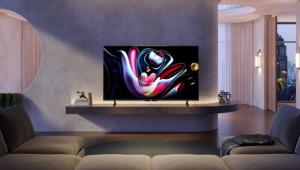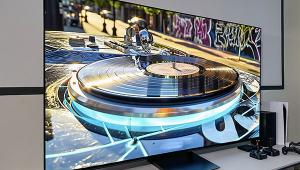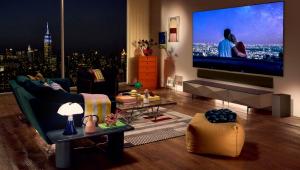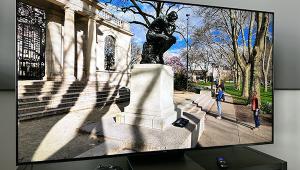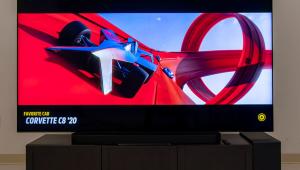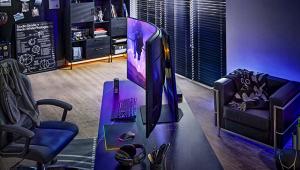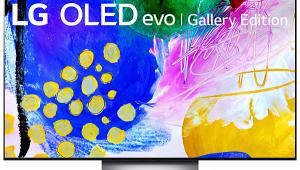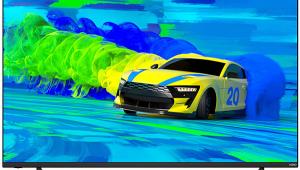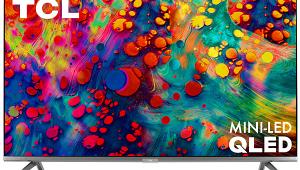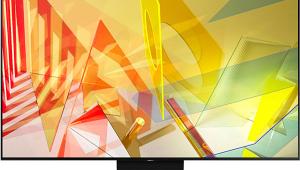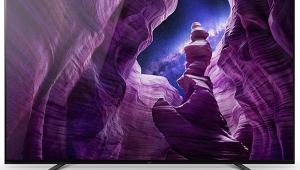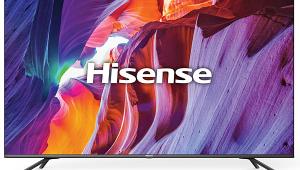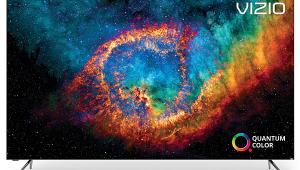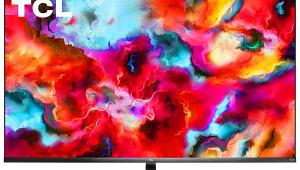Seems like a work in progress..
Vizio RS65-B2 LCD Ultra HDTV Review Test Bench
The measurements here were made using CalMAN measurement software from SpectraCal, together with Photo Research PR-650 and Klein K-10A color meters and the AVFoundry VideoForge 2K and DVDO 4K pattern generators. All of the calibrations shown here were performed in 1080p and Rec. 709.
Full-on/Full-Off Contrast Ratio: 43,888:1
At a peak white light output of 35 foot-lamberts, the black measured 0.0008 ft-L, for the full-on/full-of contrast ratio shown above, with the Active LED Zones (local dimming) engaged. Turning the Active LED Zones control to Off, with no other control changes, the peak white level increased to 39.3 ft-L and the black level to 0.012 ft-L, for a full-on/full-off contrast ratio of 3,303:1.


On a white window test pattern, the peak available light output I measured on the RS65-B2 (in Vivid mode, the Backlight on maximum, local dimming on, and the Color Temperature on Cool), was a torch-like 197 ft-L or 675 nits. Under the same conditions but in the Normal Color Temperature setting, we measured 620 nits. (The Contrast setting was 49 for this measurement; increasing it further merely further clipped the whites without increasing the brightness.) While this is well short of the Vizio’s claimed peak output of 800 nits, it’s possible that the latter is only available for the bright highlights it’s mainly needed for to generate a high dynamic range image.
In the Calibrated Dark setting (but adjusted for a peak white level of 34.2 ft-L), the pre-calibration grayscale Delta E values (20% to 100%) ranged from a low of 0.511 at 20% to a high of 6.26 at 100%. After calibration, using both the 2-point and 10-point white balance controls, the Delta Es ranged from 0.35 at 30% to 0.519 at 90%.
(Delta E is a figure of merit that indicates how closely a display adheres to the color standard. Experts generally agree that at levels below 3 to 4, the result is visibly indistinguishable from perfect color tracking. Delta E may be used to characterize either white balance (grayscale), as above, or color, as below.)

As discussed in the main review, none of the color management system controls were ultimately used to fine-tune the set’s color gamut; the CMS was tried but produced unusable results. Without it, the color Delta Es ranged from a low of 2.21 for green and a high of 5.16 for red. Both of these colors are slightly oversaturated, but not enough to significantly affect the visible color quality.
With the Gamma control set to 2.2 and local dimming engaged, the set’s gamma ranged from 2.35 at 20% to 2.56 at 90%. It was relatively uniform and didn’t produce the S-curve common to the gamma on many local-dimming sets. I found the ideal gamma setting to be 2.1 to 2.4, depending on the room lighting and the source material.—TJN
- Log in or register to post comments


Should a TV, a TV, something bought for image quality, really receive a Top Pick when it has such faults? Have we so lowered our expectations due to a lack of truly high performance displays?

I would think most people dumping six grand into their set would have a nice home theatre sound setup of their own. Maybe it's just me.

384 zones for the vizio... Seeing the backlight for the new Sony Master Drive set made me realize that all we need to do is create a direct white led display with a resolution of 720*480 and slap filters, diffusers, etc and the LCD panel. With a 480p direct led display each pixel is controlled individually and boom! Best LCD ever!
Ideally.. I would love to see an ILED... Inorganic LED Display!

Input lag measurements have become very important in modern TV reviews. Use of a Leo Bodnar input lag tester should be part of standard measurement equipment and only takes about 20 seconds to plug in and measure.
Do you have plans to add input lag measurements to your reviews?

